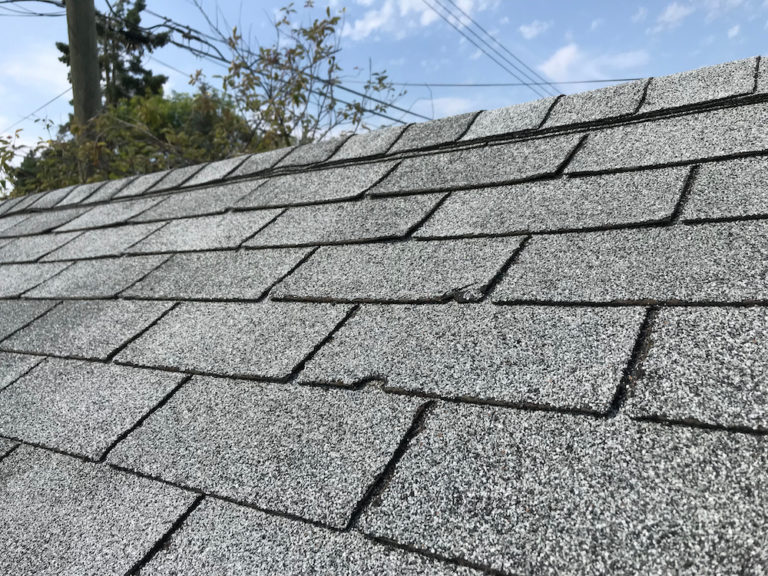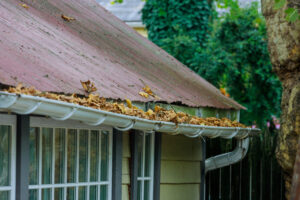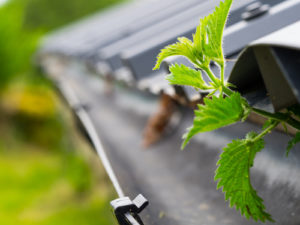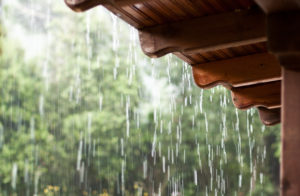Have you ever noticed tiny granules near your downspouts or in your gutters? If you have an asphalt roof then you probably have. These tiny granules are known as roof sediment, or pieces of the asphalt shingle that have loosened and, as a result, have passed through your gutter system.
Unfortunately, when homeowners spot roof sediment around their gutter system, it can be a red flag indicating some issues with their roof. While roof sediment doesn’t always mean a major issue, it’s important to note sediment. If you have an asphalt roof and have been wondering why you’re seeing shingle sediment in your open-top gutters, continue reading for some possible issues and a solution.
Your roof is newer
If your roof is relatively new, you may be wondering why tiny granules are being flushed through your gutter system. New asphalt roofs shouldn’t shed granules if it was installed correctly, right? Surprisingly, no. Newer roofs almost always shed roof sediment and it’s not usually a cause for concern if a professional roofing company did the installation.
Asphalt shingles are constructed of a base material most often made of fiberglass and have many layers of granules to help resist leaks and damage caused by the elements. These tiny granules can become loose during the installation process when they’re being walked on or from first rains or severe weather. The roof sediment makes its way from the roof and into the gutter system each time it rains, so you may see them throughout a short period. Again, roof sediment isn’t usually a cause for concern if your roof is relatively new. If you are concerned then it’s best to contact the roofing company that installed it to ensure there weren’t any issues during the installation process.
Aging roof
Unfortunately, roofs don’t last forever. The average lifespan of an asphalt shingle roof is around 15 years. When a roof ages, the shingles will naturally deteriorate over time, resulting in roof sediment that makes its way into your gutter system. Those many layers of granules that cover the fiberglass base of the shingle start to fall off little by little until there’s not much left to protect the base.
How often a roof needs to be replaced depends on a few different factors: the roofing material, when it was installed, the condition of the roof/shingles, and weather conditions. Living in The Heartland means above average humidity levels and often unpredictable weather, like ice storms and severe thunderstorms. These weather conditions can cause a roof to age quicker, requiring a replacement sooner than in other regions.
Recent severe weather
Do you know the severe weather we just mentioned? It can be detrimental to our roofs, especially if the storm brought hail. While roofs were created to protect the inside of our homes from moisture, all forms of precipitation will eventually cause the roofing materials to deteriorate over time, especially when it’s being pelted by ice. When hail hits an asphalt roof the granules will become loose and cause sediment to end up in the gutter system.
If you recently experienced severe weather that included hail, contact your homeowners insurance and a roofing professional to assess possible storm damage. They can safely inspect your roof for damage and make repairs. It’s better to have your roof inspected for damage than to assume there was none and let damage go unfixed.
While roof sediment doesn’t always indicate a major issue with your roof, it can cause major issues to your gutter system. Depending on how old your roof is or if it was installed incorrectly, there could be quite a bit of buildup of sediment stuck in your gutters and downspouts. This sediment weighs more than water and can remain inside of a gutter and create a blockage causing issues like overflowing gutters, sagging gutters, damage to the soffit and fascia boards, and even foundation damage. Failure to clean open-top gutters could result in these costly repairs.
If you’re tired of cleaning sediment out of your half-round or open-top gutter system or if you think you may have clogged gutters due to roof sediment, contact the gutter installation professionals at K-Guard. Unlike an open-top gutter system where the gutters themselves are exposed, our product has a curved hood that enables leaves and roof sediment to simply slide off the gutter system rather than entering the gutter through the narrow opening where only water adheres. Therefore, you’ll never need to remove leaves or roof sediment from your K-Guard Gutter System!
We offer free in-home estimates that include a detailed analysis of your current gutter system along with estimated costs for installing your K-Guard Gutter System. K-Guard proudly offers our gutter installation service to homeowners across both Missouri and Kansas including, but not limited to, the following locations:




